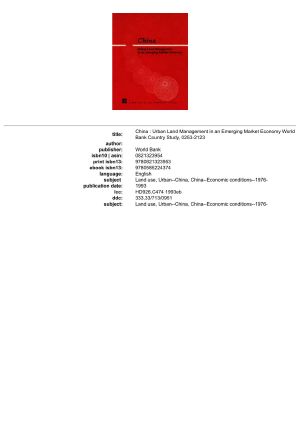China · Urban Land Management in an Emerging Market Economy

- Authors
- Group, World Bank
- Publisher
- Not Avail
- Tags
- test
- ISBN
- 9780821323953
- Date
- 1993-05-31T00:00:00+00:00
- Size
- 2.84 MB
- Lang
- en
During the 1980s, economic activity within China ' s cities and statutory towns, which accounts for more than half of the gross domestic product, grew at well over 10 percent per annum. In addition, the urban population grew at a rate of 5 percent per year between the census of 1982 and that of 1990. By 1990, 26 percent of China ' s population lived in urban areas. In spite of this vigorous expansion, the built-up areas of cities totaled only 12,000 square kilometers (km) in 1990, with an additional 8,251 square km under development in statutory towns. By contrast, total cultivated land in China totaled at least 1 million square km and the built-up area of rural villages and townships occupied an additional 140,000 square km. This report ' s main theme is that although the land area involved is small, urban land management reform is required to accelerate the efficient expansion of a regulated market economy, where land is treated as any other commodity, and where many complementary measures involving planning, legal and regulatory institutions, taxation and information infrastructure are in place. The key objective of the reform is to create property markets, where land and structures are traded at prices set competitively. This will improve the efficiency with which a key input of production is used and promote the emergency of internationally competitive cities.